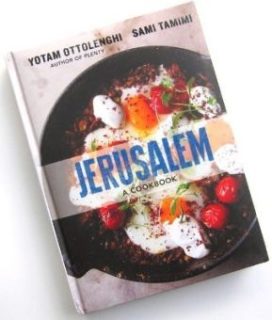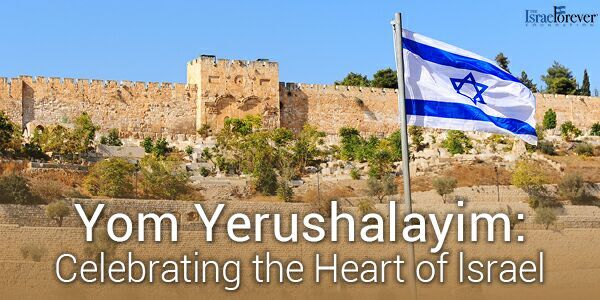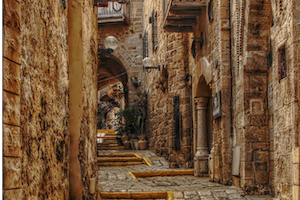Culinary Comforts On Yom Yerushalayim
By Sara Horowitz
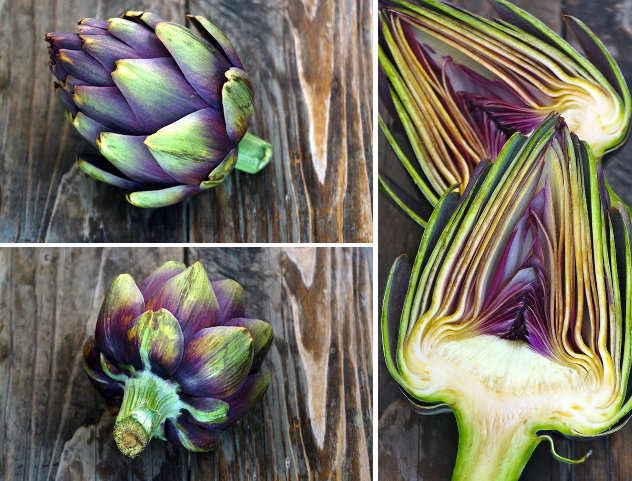
Copyright © cookingontheweekends
I tasted my first artichoke in Jerusalem when I was 19. I had a Yerushalmi boyfriend who decided to cook dinner for me. The first course was artichokes, with a lemony dipping sauce. I had never seen an artichoke before. Sitting on my plate, round and spiky, it looked both forbidding and inviting.
It seemed to me some sort of ossified exotic flower (which, as it happens, it would have become, if allowed to continue growing on its stem instead of being harvested for sale in a Jerusalem market). I didn’t know how to approach it.
My host demonstrated. He tore off an outer leaf, dipped in a lemony sauce, placed the bottom of the leaf between his teeth, scraping off the soft inner part as he pulled the leaf from his mouth....barbaric, but also, somehow, elegant.
I tried it. I had never tasted anything like it. I was hooked. I loved the taste, but also the ritual of peeling off layer after layer, revealing leaves that were increasingly tender.
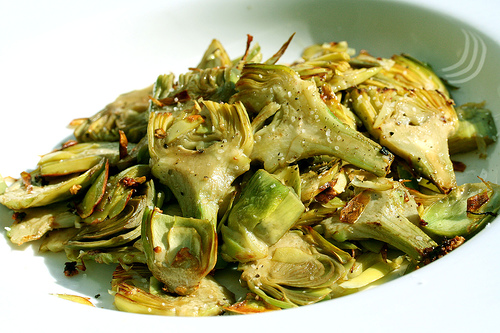
If you, too, are a fan of artichokes, then you’ve also contended with the nastiness of the choke – the hard and sharp fibers at the centre that guard the delectable heart.
The Yerushalmi and I eventually parted ways, but a lifelong love of artichokes was forged. I sometimes imagine that the forbidden fruit in Eden (which Europeans imagine as an apple and some midrashim identify as a fig) was an artichoke – although I know the artichoke is not a tree fruit at all, but a kind of flowering thistle.
Still, somehow the slow and deliberate act of stripping off leaf after leaf in pursuit of the tender heart, negotiating the spiky choke along the way, seems to me an apt metaphor for the acquisition of knowledge or of love, both of which are implicated in the edenic story.
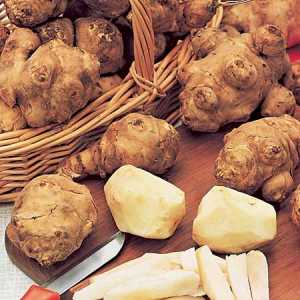
The artichoke is native to the Mediterranean region and popular in Italian and French cuisines. I have eaten, cooked and served artichokes in many places. Perhaps because of where I first encountered it, and perhaps because its combination of prickliness and tenderness dovetails with the metaphor of the Sabra, I can never eat one without thinking of Jerusalem.
(The misnamed Jerusalem artichoke, of course, is neither an artichoke nor a Jerusalem cultivar, but a tuber native to North America. Like the artichoke, it is a relative of the sunflower, or girasola in Italian, which morphed into the Jerusalem of its name.)
Culinary memories, the chain of associations that come with foods, capture the crosscurrents of flavours that migrate with people, taking on new nuances, and attaching themselves to evolving ideas of such things as Identity, family, peoplehood and relationships.
Many of my friends have been cooking their way through Jerusalem, a tantalizing new cookbook by Jerusalem-born Yotam Ottolenghi and Sammi Tamimi, two chefs who have electrified London cuisine.
Tapping ther respective Jewish and Muslim culinary traditions, in their introduction, they refer to the “flavours and smells” of their native Jerusalem as their “mother tongue,” the foundational culinary grammar that undergirds the cuisine they develop. “We imagine them and dream in them… They define comfort for us, excitement, joy, serene bliss.”
Perhaps it’s superficial or trivial to focus on foods in the context of Yom Yerushalayim. But I don’t think so. Food memories are potent. We celebrate and mourn with foods, use them to solidify the ties of friendship and family. There is something especially powerful in sharing and melding food cultures. Food is, after all, our first nurturance.
On my own university campus, the shared food cultures and religious overlap between kashrut and halal have turned our kosher cafeteria into a space that both Jewish and Muslim students find inviting.

It would be naive to suggest that food can bring peace. But there is something elemental about cooking and feeding and sharing that fosters community.
We could start with the prickly artichoke.
You must take your time and show patience in eating it.
And, after all, even the forbidding choke hiding in the centre of the leaves, under the right conditions, could blossom into a flower.
Reprinted with permission from the author from The Canadian Jewish News.
Try this Homemade Jerusalem Artichoke Recipe from the IFF Kitchen for Yom Yerushalayim:
Check out Other Jerusalem Day Recipes:
Modern Manna recipe / Artichoke bottoms with egg yolk and goat cheese

